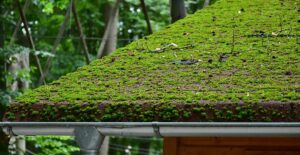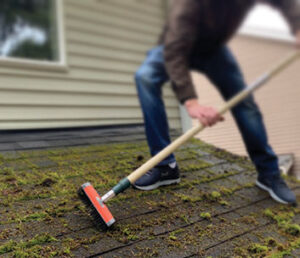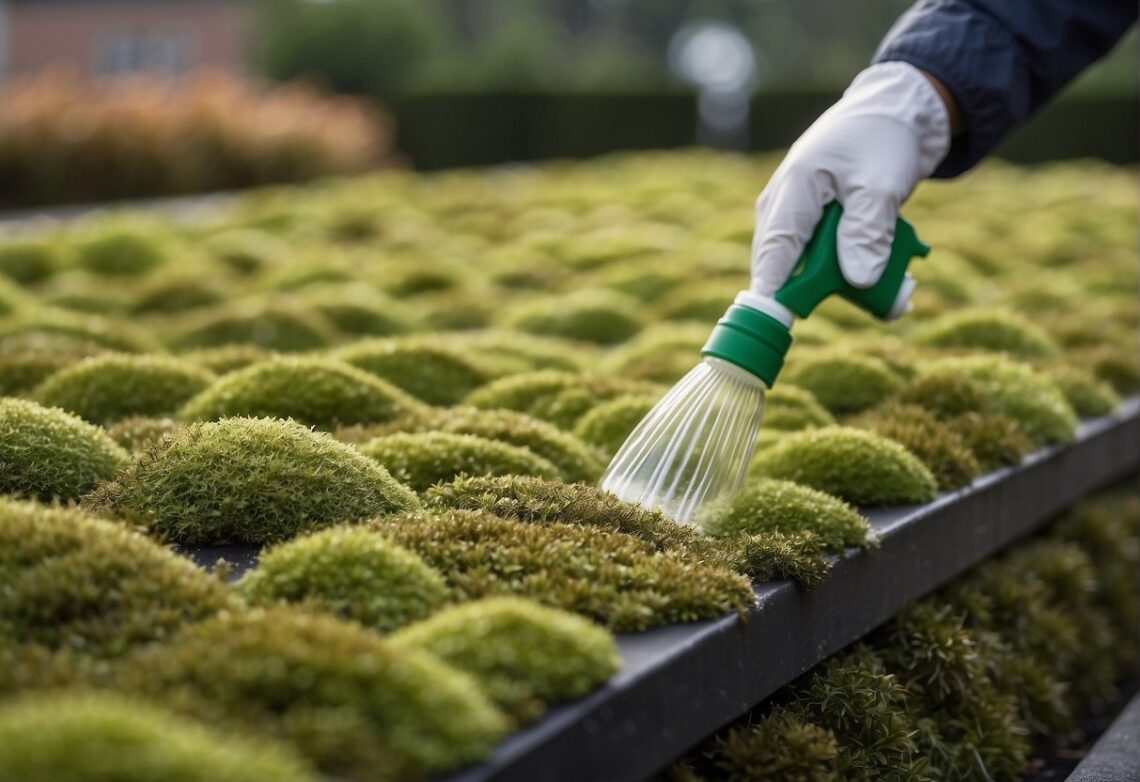Moss growth on roofs is a common problem that homeowners face, particularly in regions with high humidity and frequent rainfall. While moisture plays a significant role in moss development, sunlight—or rather, the lack of it—is another crucial factor. Understanding how sunlight affects moss growth and how it can be used in removal strategies can help homeowners maintain a clean and durable roof.
How Moss Thrives in Shaded Areas

Moss is a non-vascular plant that does not require soil to grow. Instead, it absorbs water and nutrients directly from the air and the surfaces it clings to. This ability allows moss to thrive on various structures, including rooftops, sidewalks, and trees. However, moss prefers cool, damp, and shaded environments, making the areas of a roof that receive minimal sunlight especially vulnerable.
When sunlight is blocked by overhanging trees, nearby buildings, or other obstructions, moisture tends to linger on the roof’s surface. The absence of direct sunlight prevents water from evaporating quickly, creating an ideal habitat for moss spores to settle and grow. Roofs with northern exposure are particularly susceptible since they receive less direct sunlight throughout the day. Over time, moss can form thick patches, leading to potential structural damage if left unchecked. Professional Roof Moss Removal Hillsboro Oregon services can help prevent these issues, preserving the integrity of your roof and extending its lifespan.
The Impact of Moss on Roof Longevity
While moss might give a home a rustic or natural appearance, its presence on a roof is far from beneficial. Moss retains moisture, which can lead to several issues, including roof shingle deterioration, mold growth, and even leaks. The root-like structures of moss, known as rhizoids, penetrate roofing materials, causing them to lift and crack. This compromises the integrity of the roof and increases the likelihood of water damage inside the home.
Additionally, moss growth can accelerate the breakdown of roofing materials, particularly asphalt shingles. As moss continues to spread, it can trap organic debris, further increasing moisture retention and promoting decay. Over time, this can lead to costly repairs or even the need for a complete roof replacement.
How Sunlight Helps Prevent Moss Growth
One of the most effective natural deterrents for moss is direct sunlight. Sunlight helps keep roof surfaces dry by accelerating the evaporation of moisture, making it difficult for moss to establish itself. Roof sections that receive ample sunlight throughout the day are generally less prone to moss infestations compared to shaded areas.
To maximize sunlight exposure on a roof, homeowners can take certain preventive measures. Trimming overhanging branches is an effective way to allow more sunlight to reach the roof while also reducing the amount of debris that falls onto it. Regularly removing leaves and organic material from the roof’s surface and gutters can further limit the conditions moss needs to thrive.
In addition to exposure to sunlight, proper roof maintenance, such as ensuring adequate ventilation and drainage, can prevent excessive moisture buildup. Keeping a roof dry is key to reducing the chances of moss development.
Methods for Removing Moss from Roofs
If moss has already taken hold on a roof, there are several ways to remove it, many of which leverage the power of sunlight. One common method is manual removal, which involves gently brushing away moss using a soft-bristled broom or a specialized roof brush. While this can be effective for small patches, it is important to be cautious to avoid damaging the shingles.
 Another option is using chemical treatments designed to kill moss. These solutions typically contain ingredients such as potassium salts of fatty acids or zinc sulfate, which work by drying out the moss and preventing regrowth. However, chemical treatments should be applied with care, as some solutions can be harmful to nearby plants or water sources.
Another option is using chemical treatments designed to kill moss. These solutions typically contain ingredients such as potassium salts of fatty acids or zinc sulfate, which work by drying out the moss and preventing regrowth. However, chemical treatments should be applied with care, as some solutions can be harmful to nearby plants or water sources.
For a more eco-friendly approach, homeowners can use a mixture of water and white vinegar or a mild detergent to spray affected areas. Once the moss is treated, allowing sunlight to reach the cleaned areas will help prevent it from returning.
Some homeowners choose to install zinc or copper strips along the roof’s ridge to deter future moss growth. When it rains, these metals release particles that inhibit moss formation. This method, combined with increased sunlight exposure, can be an effective long-term solution.
The Importance of Regular Roof Maintenance
Beyond the role of sunlight in moss prevention and removal, routine roof maintenance is essential for keeping a roof in optimal condition. Inspecting the roof periodically for signs of moss, algae, or other organic growth can help address minor problems before they escalate. Cleaning gutters, ensuring proper drainage, and repairing any damaged shingles can further enhance a roof’s resistance to moss.
Additionally, homeowners in regions with high rainfall or humidity should consider scheduling professional roof cleanings every few years. Roof cleaning services often use low-pressure washing techniques to remove moss without causing damage, helping to extend the lifespan of the roof.

